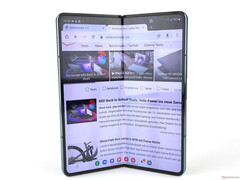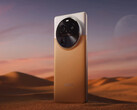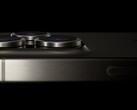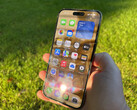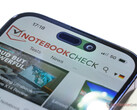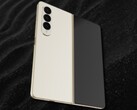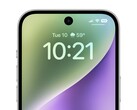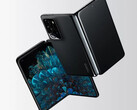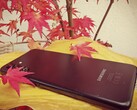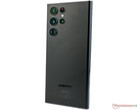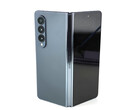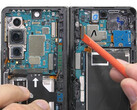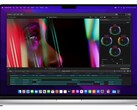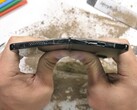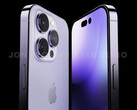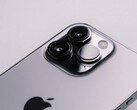Samsung is reportedly done with subpar under-display camera pictures and wants to dramatically change the way it is producing flexible OLED panels in order to improve them. In the course of the Galaxy Z Fold 4 review, we noted that its 4MP under-display camera (UDC) "allows taking solid pictures, but the results still aren't very good," while better than what comes from the Galaxy Z Fold 3's UDC unit.
On the Fold 4, Samsung decreased the pixel density of the UDC area twofold in order to leave larger gaps and let more light in, while increasing the pixel size fourfold to help collect it. This made the UDC point quite visible to the naked eye compared to the pixel-dense display area around it. Still, selfies from the under-screen camera in the main display come out rather blurry compared to the ones from the 10MP punch-hole unit in the external Z Fold 4 display.
According to Korean industry insiders, Samsung Display will be embarking on a crusade to change the current yellow polyimide (PI) film it uses to make the flexible OLED displays on phones like the Z Fold 4 or the iPhone 14 Pro Max, with a transparent one. Samsung makes flexible OLED panels not only for foldables but for "rigid" phones like Apple's latest handsets, too, as they are lighter and mode durable than screens made with a glass instead of a plastic substrate.
They, however, are also less transparent, which is an important metric to improve if you want to have higher quality UDC selfies or under-display Face ID kits on Dynamic Island-equipped phones like the latest iPhone 14 Pro series. Back in the spring, famed analyst Kuo claimed that Apple will release a truly all-screen handset in 2024 by tucking the Face ID and selfie camera modules under the display.
Coincidentally, that is exactly when Samsung aims to have solved the flexible OLED display substrate transparency challenge, tip industry insiders. The current PI film mixture is varnished as a liquid onto a glass substrate which is subsequently removed with a laser. The varnish concoction is heat-resistant but results in a film with a yellowish overcast when the glass substrate is peeled off with a process called thermal curing.
Samsung tried to apply a polyimide mixture that will result in a transparent substrate for the Galaxy Z Fold 4 display, but it wasn't as heat-resistant as the current PI film material. It will try to solve this puzzle in time for the 2024 Galaxy Z Fold 6 at first and, subsequently, for the "all-screen" iPhone 16 and its under-display selfie camera or Face ID kit as well.
LG, which is the other iPhone 14 Pro series display supplier, has also commenced work on a clear plastic substrate for its own flexible OLED displays and aims to increase the panels' transparency twofold compared to what is currently used on iPhones with the Dynamic Island cutout.


